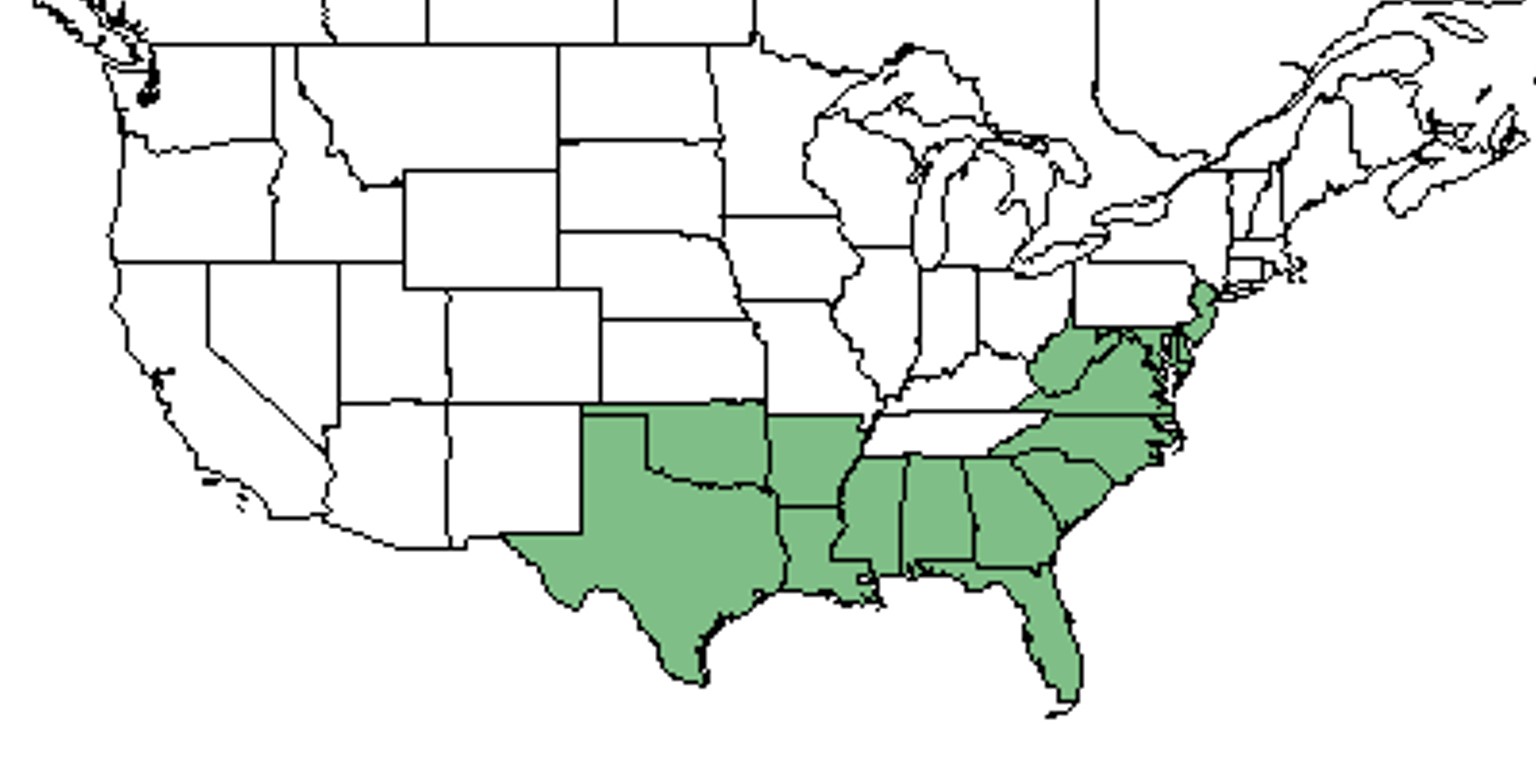Difference between revisions of "Morella cerifera"
(→Taxonomic notes) |
|||
| Line 21: | Line 21: | ||
==Taxonomic notes== | ==Taxonomic notes== | ||
| − | Synonyms: ''Myrica cerifera'' L.; ''Myrica cerifera'' Linnaeus var. ''cerifera''; ''Cerothamnus ceriferus'' (Linnaeus) Small ==Description== | + | Synonyms: ''Myrica cerifera'' L.; ''Myrica cerifera'' Linnaeus var. ''cerifera''; ''Cerothamnus ceriferus'' (Linnaeus) Small |
| + | |||
| + | ==Description== | ||
<!-- Basic life history facts such as annual/perrenial, monoecious/dioecious, root morphology, seed type, etc. --> | <!-- Basic life history facts such as annual/perrenial, monoecious/dioecious, root morphology, seed type, etc. --> | ||
"Dioecious or monoecious shrubs or small trees, with brown to brownish-black, pubescent to glabrate twigs. Leaves deciduous or semi-evergreen, coriaceous, petiolate, exstipulate. Staminate catkins ovoid-cylindric, 0.6-2 cm long, 4-6 mm in diam.; bracteate and bracteolate; stamens 2-1, mostly 2-5. Pistillate catkins ovoid or cylindric, 5-10 mm long, deciduous-bracteate. Fruits drupaceous, white, globose, verrucose, 2.5-7 mm in diam. A taxonomically difficult group with intergrading species." - Radford et al 1964 | "Dioecious or monoecious shrubs or small trees, with brown to brownish-black, pubescent to glabrate twigs. Leaves deciduous or semi-evergreen, coriaceous, petiolate, exstipulate. Staminate catkins ovoid-cylindric, 0.6-2 cm long, 4-6 mm in diam.; bracteate and bracteolate; stamens 2-1, mostly 2-5. Pistillate catkins ovoid or cylindric, 5-10 mm long, deciduous-bracteate. Fruits drupaceous, white, globose, verrucose, 2.5-7 mm in diam. A taxonomically difficult group with intergrading species." - Radford et al 1964 | ||
Revision as of 15:21, 23 March 2016
| Morella cerfiera | |
|---|---|
Error creating thumbnail: Unable to save thumbnail to destination
| |
| Scientific classification | |
| Kingdom: | Plantae |
| Division: | Tracheophyta- Vascular plants |
| Class: | Magnoliopsida – Dicotyledons |
| Order: | Fagales |
| Family: | Myricaceae |
| Genus: | Morella |
| Species: | M. cerfiera |
| Binomial name | |
| Morella cerfiera (L.) Small | |

| |
| Natural range of Morella cerfiera from USDA NRCS Plants Database. | |
Common names: Waxmyrtle, Southern Bayberry
Contents
Taxonomic notes
Synonyms: Myrica cerifera L.; Myrica cerifera Linnaeus var. cerifera; Cerothamnus ceriferus (Linnaeus) Small
Description
"Dioecious or monoecious shrubs or small trees, with brown to brownish-black, pubescent to glabrate twigs. Leaves deciduous or semi-evergreen, coriaceous, petiolate, exstipulate. Staminate catkins ovoid-cylindric, 0.6-2 cm long, 4-6 mm in diam.; bracteate and bracteolate; stamens 2-1, mostly 2-5. Pistillate catkins ovoid or cylindric, 5-10 mm long, deciduous-bracteate. Fruits drupaceous, white, globose, verrucose, 2.5-7 mm in diam. A taxonomically difficult group with intergrading species." - Radford et al 1964
"Shrub or small tree, 0.3-7 m tall. Leaves oblanceolate or elliptic, to 8 cm long and 2cm wide, heavily resinous on both surfaces, usually pubescent beneath, acute or obtuse, serrate or entire, base cuneate to attenuate, petioles to 1 cm long. Fruits 2.5-3.5 mm in diam." - Radford et al 1964
Distribution
Is found within the Coastal Plain and as far north as New Jersey (Weakley 2015).
Ecology
Habitat
Is naturally found in interdune swales, pocosins, brackish marshes, and other wet to moist habitats (Weakley 2015). Is widely planted as an ornamental or as a landscaping shrub (Weakley 2015).
Phenology
Flowers in April, and also from August to October (Weakley 2015).
Conservation and Management
Cultivation and restoration
Photo Gallery
References and notes
Radford, Albert E., Harry E. Ahles, and C. Ritchie Bell. Manual of the Vascular Flora of the Carolinas. 1964, 1968. The University of North Carolina Press. 360. Print.
Weakley, Alan S. Flora of the Southern and Mid-Atlantic States: Working Draft of 21 May 2015. University of North Carolina Herbarium (NCU). PDF. 644.